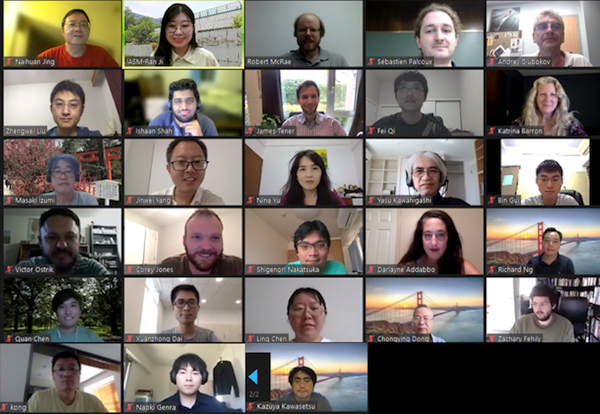Subfactors, Vertex Operator Algebras, and Tensor Categories (Online) (21w5247)
Organizers
Robert McRae (Tsinghua University)
Terry Gannon (University of Alberta)
Vaughan Jones (Vanderbilt University)
Jinwei Yang (Shanghai Jiao Tong University)
Description
The Institute for Advanced Study in Mathematics will host the "Subfactors, Vertex Operator Algebras, and Tensor Categories" workshop in Hangzhou, China from September 19 to September 24, 2021.
Subfactors and vertex operator algebras are mathematical structures that at first glance appear very different, but both are used in the mathematical study of quantum field theory. In particular, vertex operator algebras are algebraic structures arising in two-dimensional conformal field theory (CFT), a quantum field theory with applications ranging from string theory to condensed matter physics to quantum computing. On the other hand, subfactors are closely related to conformal nets, which are a functional-analytic approach to CFT. Because they are both mathematical descriptions the same quantum field theory, the theories of vertex operator algebras and conformal nets are widely believed to be equivalent, but only in the last few years has there been substantial progress in establishing an equivalence. As many important results in conformal field theory have been established for either vertex operator algebras or conformal nets, but not necessarily both, developing connections and equivalences will be useful for answering open questions in both mathematical formulations of CFT.
Although subfactors are structures in functional analysis while vertex operator algebras are algebraic, in recent years both have been studied using techniques from tensor categories. Tensor categories are mathematical structures consisting of a collection of objects and functions between them that can be multiplied using a ''tensor product`` operation. In tensor categories arising from CFT, the objects can be interpreted as the various particles of the theory and the tensor product of two objects describes what can come out when the two corresponding particles interact. This workshop will bring together world experts from vertex operator algebras, subfactors, tensor category theory, and related areas to exchange ideas and to collaborate for future breakthroughs.
The Institute for Advanced Study in Mathematics (IASM) in Hangzhou, China, and the Banff International Research Station for Mathematical Innovation and Discovery (BIRS) in Banff, are collaborative Canada-US-Mexico ventures that provide an environment for creative interaction as well as the exchange of ideas, knowledge, and methods within the Mathematical Sciences, with related disciplines and with industry. The research station in Banff is supported by Canada's Natural Science and Engineering Research Council (NSERC), the U.S. National Science Foundation (NSF), Alberta's Advanced Education and Technology, and Mexico's Consejo Nacional de Ciencia y Tecnología (CONACYT).






